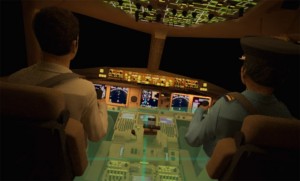
An Australian pilot has invented a system that could help solve the problem of spatial disorientation.
Russell Crane has received a provisional patent for the Green Orientation Light (GO Light) which he says will give pilots a constant reference point of the horizon in their peripheral vision, helping them stay continually aware of the plane’s attitude.
“Presently, to verify orientation when there are no visual cues, the pilot has to focus on their small attitude indicator (AI) instrument,” Mr Crane said in a statement. “However, this verification requires the pilot firstly to recognise that they may be disorientated and actively focus their attention on the AI.”
The statement says research has shown that in accidents caused by spatial disorientation, the phenomenon went unrecognised by the pilot in up to 85 per cent of occurrences.
“The GO Light mitigates unrecognised spatial disorientation and allows pilots more freedom to concentrate on their other instruments whilst maintaining an almost subconscious and accurate awareness of their attitude,” he added.
The system’s design also includes an additional feature in which external lights on the fuselage would be replaced with pivoting lights to replicate the in-cockpit system outside the aircraft.
“A solution to spatial disorientation is like the elusive Holy Grail of aviation safety,” AvLaw International chairman Ron Bartsch said. “The GO Light takes the concept of the AI and turns it into a constant part of the pilot’s subconscious perception. If this concept can be taken forward and commercialised, it could be the most important Australian aviation invention since the black box.”
For more information on the GO Light, click here.
















Christer Magnusson
says:Nothing new!. There was a (U.S.?) research project already in the 70-ies with an artificial horizon line projected all over the cockpit for improved orientation. I read a report about it when I was working with cockpit layout for the Swedish Air Force in 1976-1977. As far as I can remember it reduced spatial disorientation substantially, but since I was tranferred to other duties I never checked the final results.
Adam
says:The SR71 had a similar feature